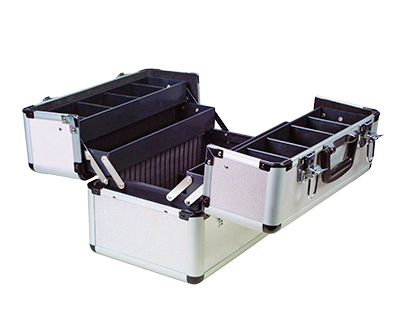Opening the manufacturing digital toolbox to turbocharge the regional collaboration
By John Sheridan, Manufacturing Toolbox founder >>
REGIONS have to collaborate. Few have the resources to go it alone. And it is an illusion to imagine otherwise.
In this digital revolution, we are all driven individually towards more connection, more collaboration and more integration. It affects what we do, how we do it and it changes our attitude towards others. Power has shifted to the informed customer permanently. And what affects and impacts individuals, impacts the regions they live in.
There is strength in regional collaboration and sharing, Collectively and collaboratively we can achieve far more than we dream of as individuals or single organisations. 
And it is that simple fact that led to the Toolbox project.
It was first sparked by the widely published commentary from Canberra two years ago, that “Manufacturing is dead in Australia and we are now a services economy”.
That statement, prompted by the final decision on withdrawal by the major carmakers, and followed by problems in supply chain industries, refineries and steel works, stimulated a lot of discussion and debate about the future of manufacturing.
But not everybody agreed that we could or should no longer make things, invent things and export things in Australia.
Dissension flourished on Linkedin, on phone calls and in coffee shops, and lots of successful Australian manufacturers were identified and promoted as examples but only within the manufacturing forums, not with the general public at large.
So the public began to believe that manufacturing had no future.
Which stimulated the question, “How can we show people that Australia’s manufacturing industry may be under stress and transition in some regions, but is alive and well in others?”
So, working with partners, we created the Manufacturing Toolbox focused on the main issues that manufacturing faced – export, management and workforce skills, R&D and collaboration.
It was a platform built to enable the founding partners – CSIRO, ACS, QMI Solutions, State Library, TIQ, Outsource Institute, RDA Brisbane and others to support and engage with manufacturing industry.
Then a new question arose, “How can we demonstrate to people which Australian manufacturers are still successful? We need a showcase.” 
And we were pointed to the Taiwan Trade portal as an example of how to showcase a nation’s manufacturers to the world, which led to “we can do that”, and that led to the Manufacturing Showcase, which includes 4,500 of Australia’s leading, exporting manufacturers and producers.
And the showcase grows day by day.
Development was collaborative. The way forward was by decided by consensus and partner feedback.
And it led to new things. New comments such as, “If we can showcase Australian manufacturers to the world, then surely we can showcase local manufacturers to our region = buy local.”
To which, the answer was, “yes”.
Or, “Could you showcase all the 21st century solutions for the agricultural sector – the drones, robots, precision agricultural solutions, tags, weighing systems, weather solutions, farm machinery, farm management systems, GIS, crop chemicals etc?”
“Yes.”
“Could you showcase the Australian manufacturers that are of interest to Taiwan, Hong Kong, China, India, UAE, Japan, Thailand, Europe and so on?”
“Yes.”
“What about indigenous artists? Or furniture manufacturers?”
And so on. There are many other suggestions and ideas now in consideration. And the door is open for more.
Not everybody found it easy to visualise and imagine what might be possible, but every time we demonstrated the manufacturing showcase to people … the penny dropped, and “what if,” “what about?” and “could we do this?” became the questions of the day.
And the thing these suggestions have in common is that they are all driven by real world needs, real world suggestions and ideas.
They haven’t come from a policy group in Canberra.
They come from people facing local problems and real issues, frustrated but with a desire to do something about them.
The development has been collaborative. Potential on one side meeting ideas on the other side and generating a new solution and a fresh version of the toolbox.
And it has only just begun. The toolbox has been live for three weeks and it is still developing.
The process is akin to gardening not architecture. A response to whatever pops up that might grow and evolve, not “we’re going to build this in this way” because that is what’s on the plan.
Gardening is a responsive relationship, which continues through the whole life of a garden. Architecture is a responsive relationship at the creation of the plan.
Digital technology provides the option of ongoing, agile responses to human and regional needs as they evolve. It offers the option of collaborative development.
MORE TOOLBOXES OPEN
The Manufacturing Toolbox will now be cloned and configured for other sectors. It is happening now. More toolboxes with more tools.
It will be cloned and configured for regions. It will be configured for issues.
But all versions join up. All platforms can share, if appropriate. Publicly or privately, if desired. All platforms are connected and that connectivity can deliver new value to partners, if that is what is wanted.
So far everybody has wanted what is in common (eg, the showcase, resources, news, events), but also then wanted something specifically for themselves (local services, their own ‘shop windows’, private forums, specific courseware).
That is the intrigue of the project. Where it goes next is anybody’s guess. It depends on who puts their hand up. It depends on which shoot bursts through the soil next, and in which part of the garden.
This is an iterative process. It is holistic. It is fascinating.
The project has been inspired and supported by many individuals – in government, in academia, in not-for-profits, in commerce, in small business, but the sum is greater than the parts. And the project is not subject to whim, elections or changes of government.
It is simply a way of doing more with less.
It is part of a new breed of ‘grass roots’ driven actions, energised by frustration, imagination and unwillingness to wait any longer, bridging divides, silos and departmental walls, and driven by the question “what if?”
Manufacturing in Australia isn’t dead. Nor is any creative or productive industry where individuals can innovate, invent, create and try, try and try again.
There are a lot of tools in the toolbox and there will soon be many more. Each project delivers some value to other projects. Not everybody wants to use all the tools. And now some regions want their own toolboxes.
And a manufacturer can promote their business locally, regionally or overseas. A manufacturer can engage with others, with email news, capability building programs and find help and advice.
Digital technology, leveraging email, content management, learning management, apps and collaboration tools can be used for more than just “my business” or “my region” or “my sector”.
Digital technology can also connect and create opportunities for new relationships and ideas, where 1 + 1 = 11 not just 2.
TURBO-CHARGING REGIONAL DEVELOPMENT
That is why this project has been hard for some people to get their heads around. It is a result of joined up thinking. And joined up listening. A result of many ideas. Many seeds, but one garden.
It is open source in many different ways and on many levels, delivering results far beyond the basic tools and technologies applied.
And not everybody is comfortable with that. Collaboration and ‘command and control’ don’t sit together happily in the 21st century, that’s for sure.
But the digital revolution demands shared value, so the choice is clear for most people. But will never be clear for all.
Collaboration is the only effective, affordable, responsible way forwards.
Farmers, the best ones – and that is the majority – have always understood what the miners don’t. Everything is connected and you can’t steal from the farm what you then expect to sustain you for generations to come. Farmers add value to the soil. Year in and year out, or there is no farm. There is a message there.
We should listen harder to what Australian farmers have to teach us.
We are good at team sports in Australia. Always have been. We now need to become good at team economic development.
http://manufacturing.digitaltoolbox.org
ends

